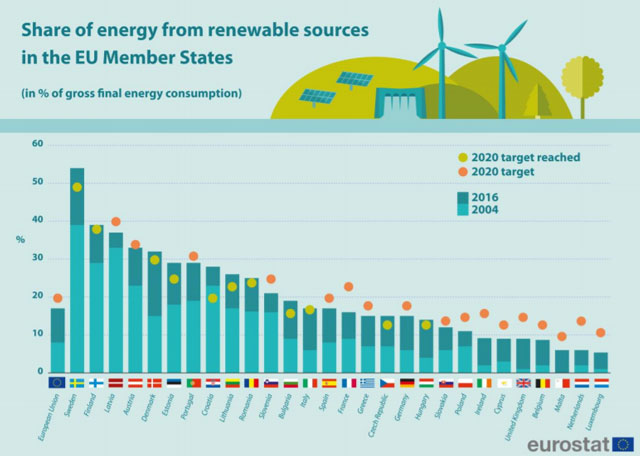Britain will probably see a higher risk of blackouts after Brexit

Britain probably will risk more energy supply shortages after leaving the European Union, a panel of lawmakers from the House of Lords said, adding to pressure on the government to bring forward measures that protect consumers from higher costs.
“It’s likely that the U.K.’s withdrawal from the EU will lead to less-efficient energy trade, which could in turn increase the price paid by consumers for energy security,” the House of Lords EU Committee said in a report published Monday. “Post-Brexit, the U.K. may be more vulnerable to supply shortages in the event of extreme weather or unplanned generation outages.”
The committee drawn from the main political parties said the government’s Brexit negotiation stance to reject an enduring role for the European Court of Justice “places significant political and institutional constraints” on the U.K.’s ability to remain in the EU energy market. The lawmakers urged the government to clarify its post-Brexit policy in the event it’s forced to leave that market.
“While the government appears confident that a post-Brexit energy relationship with the EU will favor the U.K., we are concerned that this confidence is based on a misplaced expectation of pragmatism and that broader political considerations may affect the degree to which the U.K. can engage with the internal energy market post-Brexit.”
Britain’s markets will probably diverge from Europe’s after Brexit because it doesn’t want the Brussels oversight, the Oxford Institute of Energy Studies said in September. There’s a risk that power-trading volumes will fall and prices will rise because regulatory regimes won’t match, EPEX Spot SE, an electricity exchange, said last year.
“If we have less control, we’re more vulnerable,” said Robin Teverson, chairman of the House of Lords EU Energy and Environment Sub-Committee, by phone. “Are we saying this is a long-term disaster? No we’re not.”
The EU withdrawal Bill is due to be debated in the Lords next week, and Teverson plans to propose a compromise amendment where the U.K. would remain in the EU’s energy market and adopt a system similar to Norway for dispute resolution, which takes account of European Court of Justice decisions, Teverson said.
Even as Britain begins its exit, there are at least 12 power-cable projects valued at more than 10 billion euros ($12 billion) in the works to expand the island nation’s connection to the surplus generating capacity on the continent.
The Lords panel’s conclusions and recommendations include:
- The Swiss experience shows that mutual benefits and a history within the system are no guarantee of EU energy market access
- The “Norway model” would bring benefits to the U.K. in terms of energy security, but it’s contingent upon membership of the European Economic Area and the European Free Trade Association, which the government has ruled out
- A transition period where the key elements of the current U.K.-EU energy relationship are maintained is needed to allow time for the industry to adjust its working practices, contracts and IT systems, and ensure secure supplies
- Continued access to EU workers will be needed, especially engineers
- It’s unlikely that tariffs will be applied to U.K.-EU trade in gas and electricity post-Brexit, even in the event of a ‘no deal’ scenario. However, the energy industry could be affected by tariffs on products used in construction and maintenance
Source: Bloomberg





